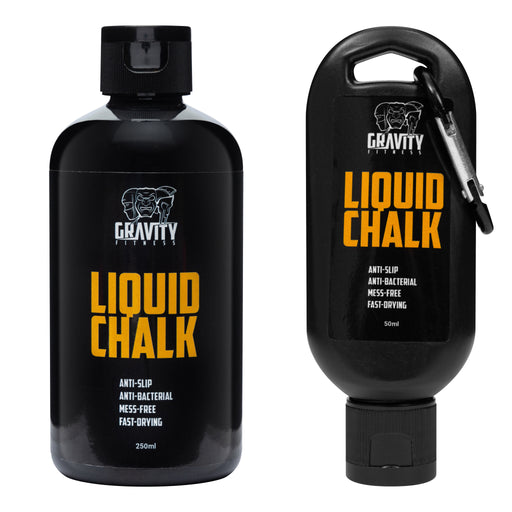
The Feast & Famine Approach to Christmas Overindulgence
For many fitness fanatics, Christmas can be seen as a time which challenges our nutritional and routine schedule discipline. With the bombardment of mince pies, festive chocolate, Christmas markets and free-flowing booze, it’s easy to forget our fitness goals, for a time at least, and overindulge. But is this necessarily a bad thing? Perhaps you don’t need to feel so guilty as you down that second helping of roast potatoes and pigs in blankets, and here’s why…
If you’re already here, reading this, then you’re most likely already hitting your workout schedule pretty hard anyway. Whether it’s rucking every weekend with visits to the gym in between, you’re either consistently staying active, or at least planning to. The thing is, constant physical strain can actually be detrimental, hindering growth, causing fatigue and becoming monotonous, so before you get burnt out, take this as a public service announcement, telling you that you’re allowed to relax this Christmas!
The Feast and Famine Approach
The feast and famine style diet is an approach to eating that alternates between periods of over-consumption (feasting) and significant restriction or fasting (famine). It’s based on the concept of cyclical eating, where the body goes through phases of abundance followed by periods of scarcity. This approach is often associated with intermittent fasting or other forms of structured eating patterns that include intentional periods of eating in excess, followed by periods of extreme calorie reduction. Sounds like Christmas is a perfect time for an extended period of feasting! Especially when we consider that the average person will consume around 3,000 to 4,500 calories on the big day.
Key Components of the Feast and Famine Diet:
- Feasting Periods:
- During the "feast" phase, you consume a large amount of food, often in a single meal or over a short period of time. This can involve eating high-calorie, rich, or indulgent foods.
- The idea is to consume more than you typically would during normal eating periods to fuel the body with extra calories, nutrients, and energy.
- Famine Periods:
- The "famine" phase involves a strict period of fasting or severe calorie restriction, where you may consume little to no food for an extended period (e.g., 24–48 hours).
- This phase aims to force the body to use stored energy (fat) for fuel and give the digestive system a rest.
Goals and Benefits:
The feast and famine diet has gained attention due to its potential benefits for body composition, metabolism, and even longevity, based on principles from intermittent fasting and evolutionary biology. Some proponents believe that alternating between feast and famine can:
- Promote Fat Loss: The famine phase forces the body to burn stored fat for energy, potentially aiding in weight loss.
- Boost Metabolism: The feast phase may help to prevent metabolic slowdown that sometimes accompanies long-term calorie restriction by temporarily boosting metabolic rate.
- Improve Insulin Sensitivity: Periods of fasting or calorie restriction are believed to improve the body’s sensitivity to insulin, reducing the risk of insulin resistance.
- Enhance Mental Clarity and Focus: Some people report better mental clarity during fasting periods, though this can vary from person to person.
The Hidden Benefits of Christmas Calorie Surplus
An extended period of rest and calorie consumption can be beneficial for workout routines for several reasons, particularly in the context of recovery, muscle growth, and long-term fitness progress. Here’s why this approach can help:
- Muscle Recovery and Growth
- Rest is Essential for Recovery: Intense workouts, particularly resistance training, cause small tears in muscle fibres. Rest periods are when these fibres repair and rebuild, becoming stronger and larger. Without adequate rest, muscles don’t have enough time to recover, leading to diminished performance and potential injury.
- Rest Periods Allow for Protein Synthesis: After workouts, the body goes into a state of protein synthesis, where it uses the available calories (including protein) to rebuild muscle tissue. Without proper rest, protein synthesis is reduced, and muscle growth is stunted.
- Energy Replenishment and Glycogen Stores
- Calorie Consumption for Energy: During periods of intense exercise, the body burns through stored energy (glycogen in muscles and liver) and fat. After a workout, calorie consumption—particularly through carbohydrates—helps replenish glycogen stores, ensuring that the body has enough energy for the next workout or physical activity.
- Carbohydrates Aid in Recovery: Eating carbohydrates after exercise helps restore glycogen levels, which are essential for muscle function. Low glycogen levels can cause fatigue, poor performance, and muscle breakdown.
- Hormonal Balance
- Support for Hormones like Insulin and Growth Hormone: When you consume calories (especially protein and carbohydrates) after exercise, insulin is released to aid in nutrient uptake into cells, including amino acids for muscle repair. Additionally, during rest, the body releases growth hormone, which is crucial for muscle recovery and fat loss.
- Testosterone Production: Adequate rest, combined with proper nutrition, helps maintain balanced testosterone levels, which are key for muscle growth, strength, and recovery. Overtraining without proper rest can suppress testosterone, hindering muscle development.
- Preventing Overtraining and Burnout
- Avoiding Overtraining Syndrome: An extended rest period after intense workouts helps prevent overtraining syndrome, a condition where the body becomes fatigued, leading to decreased performance, irritability, and potential injury. Overtraining can result from inadequate rest and recovery, leading to a decrease in overall workout effectiveness.
- Mental Recovery: Physical recovery is important, but so is mental rest. Intense training can be mentally taxing, and taking breaks allows for mental rejuvenation, helping you stay motivated and focused on long-term fitness goals.
- Enhancing Long-Term Performance
- Improved Performance with Proper Recovery: Giving your body time to rest and repair allows you to come back stronger and more capable. For example, if you rest adequately after a high-intensity workout, you’ll have more energy and strength for your next session, leading to progressive improvements over time.
- Sustained Consistency: An extended rest period helps ensure that you can maintain a consistent workout routine over the long term. Without enough rest, you risk burnout, injury, or fatigue, which can break your training consistency and impede long-term progress.
- Fat Loss and Body Composition
- Fat Burning: In periods of rest (especially after consuming fewer calories during fasting or lower-intensity training), the body switches to burning fat for energy, aiding fat loss. Proper calorie consumption in combination with strategic rest periods (such as during intermittent fasting or active rest days) helps to balance muscle preservation and fat burning.
- Calorie Cycling: An approach like calorie cycling, where you alternate between periods of higher calorie intake (feasting) and periods of calorie restriction (fasting or lower-calorie days), can promote fat loss while maintaining or even building muscle. The feast phase supports muscle recovery and growth, while the famine phase promotes fat breakdown.
- Reduced Risk of Injury
- Muscle and Joint Health: Rest periods allow not just for muscle recovery, but also for the joints, tendons, and ligaments to recover from the stresses of intense exercise. Without sufficient rest and recovery, these structures become more susceptible to strain or injury.
- Prevention of Chronic Fatigue: Chronic fatigue due to lack of rest can increase the risk of accidents or improper form during workouts, which may lead to injury.
- Mental Focus and Motivation
- Building Mental Resilience: Scheduled rest periods can also serve as a mental reset. When you’ve had adequate rest and calorie consumption, you’re more likely to approach your next workout with enthusiasm and a renewed sense of focus.
- Avoiding Burnout: Constantly pushing yourself without proper rest leads to burnout. Scheduled breaks in your workout routine help keep your fitness journey enjoyable, increasing the likelihood of sticking with it for the long term.
So, Christmas feasting isn’t a bad thing after all, and you don’t need to feel guilty! In fact, you an use it to your advantage, so pile up those roasties and pour on the gravy, in the knowledge that all those tasty calories and extended rest will go towards building back up your muscle. And here’s another helpful little benefit: Turkey is one of the highest sources of protein, with even more than chicken and beef, giving you up to 30 grams of protein per 3-ounce serving. Anyway, hopefully we’ve convinced you enough now to let loose a little this Christmas, so sit back and relax. From Gravity Fitness, have a merry Christmas!












































